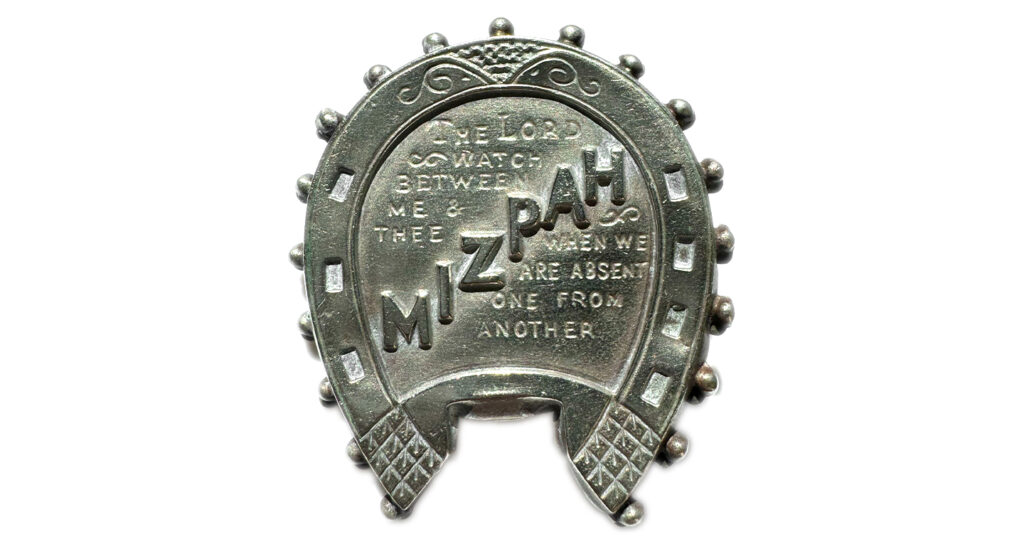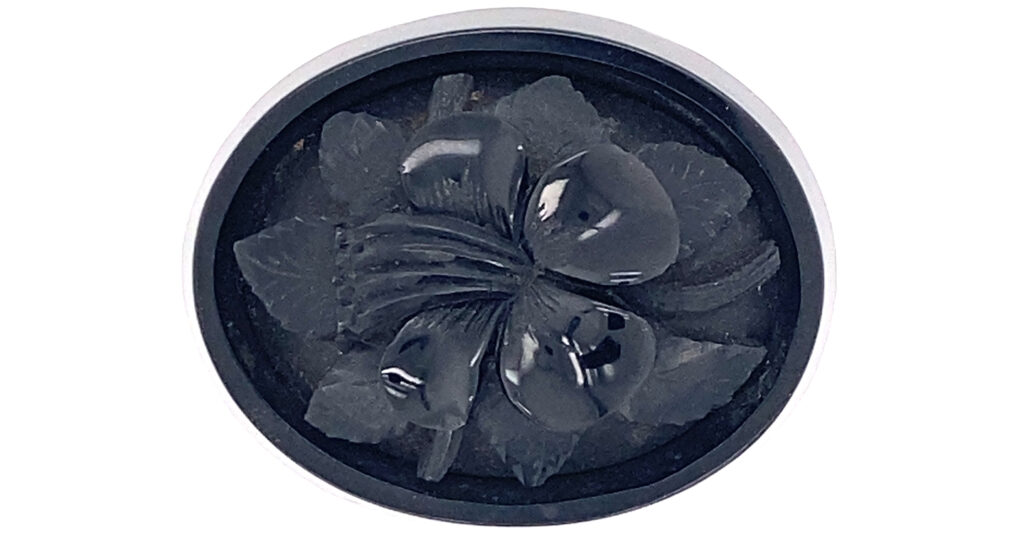Grape Symbolism in Jewels
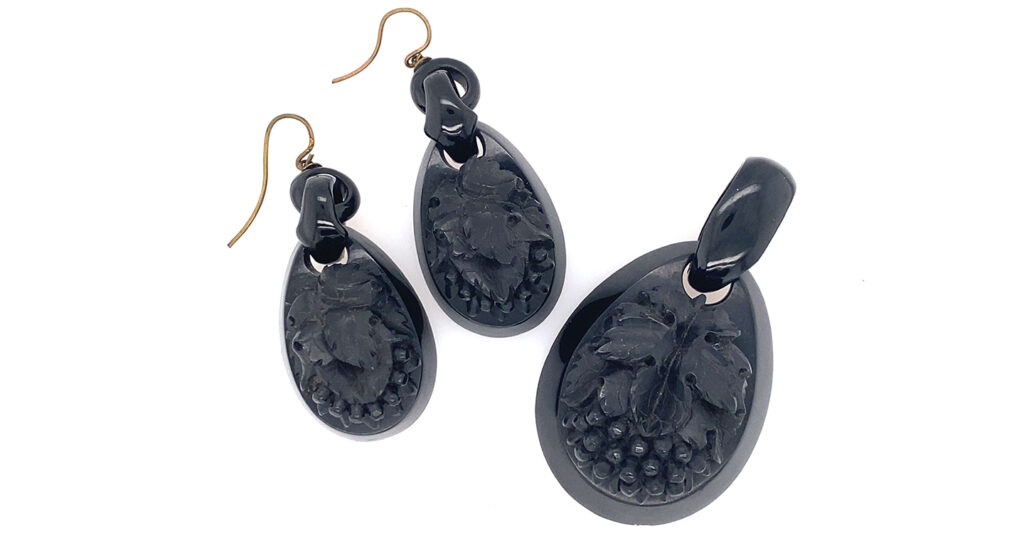
The Museum of Whitby Jet is a genuine establishment of living history. Combined with the store W. Hammond, it presents the oldest connection to 19th century Whitby Jet manufacture that still exists. It is a tribute to the 1500 men and 200 shops that existed in 1873 to produce the finest quality of Jet available in the world. Their craft, of carving, turning and polishing jet held a standard that set the British Empire beyond any other jet industry in the world, being held in the highest regard by Queen Victoria herself.
Due to the popularity of Whitby Jet, the instances of its carving designs are almost infinite. The Victorians relished the romantic and sentimental language of flowers. They were educated, had access to new wealth and were the first affluent middle class that could afford leisure time. Travel was a part of seasonal Victorian lifestyle and cottage industries emerged with the connection of rail lines that ferried these sentimental people across Britain. Whitby’s popularity as the centre of Jet fed its local community and its economy. Carvers were charged with appealing to the most popular designs from the visitors, who requested sentimental tokens to gift to their loved ones.
This Art of Mourning series is in partnership with the Museum of Whitby Jet and is a look at the jewels of the museum through the eyes of the Victorians who requested and understood the love language of flowers.
To achieve this, part 1 of the series is an introduction to Whitby Jet, which can be read below:
Link > Discover Whitby Jet
Part 2 is an understanding of ‘floriography’, a late 18th and 19th century attempt by philosophers and writers to connect floral discoveries of the world to emotion to empirical fact. This can be read below:
Link > Understanding Symbolism: Botany and Floriography
Symbolism of The Grape

Middle class 19th century society was affluent, well travelled and educated in a way that modern society had not seen. Gifting sentimental tokens of love was a commonplace part of social etiquette between a family or a loved one. Their understanding of what the floral designs of these jewels were, required publications as the source of their meanings. Using the basis of “floriography’s”, development from the late 18th to mid-19th centuries, the interpretation of these flowers can be seen through the publications of Floral Emblems, by Henry Phillips, published in 1825, The Language of Flowers with Illustrated Poetry, by Frederic Shoberl in 1839 and The Illustrated Language of Flowers, Mrs L. Burke in 1856. The Illustrated Language of Flowers is still published and used for its symbolic and poetic meaning behind flowers.
The grape can represent Dionysus and was used liberally in jewellery design of the c.1860s. The popular firm of Castellani was influential in using classical Etruscan, Roman and Greek designs in their jewels. The Archaeological Revival was incredibly popular worldwide in the c.1860-1880 period and the symbol of the grape was used in many forms of sentimental jewels. It was not uncommon to find the leaf used in Christian churches or funeral funeralia, as they also show the triumph of victory over death and the joys of heaven.
In literal terms, look at the symbol itself and note the behaviour of the grape. It is a plant which grows in abundance and one of the earliest cultivated crops known to mobilised society, hence the connection to the symbol bearing fruit for the harvest. Here is an element of birth/rebirth within the representation of the grapes and also its connection to victory, as the ripe harvest shows the promise of the fruits rewards being reaped and turned into the production of sustenance for the future as well as a product which promotes happiness. In this, there is the link towards Dionysus, with the vine being worn by cult members to represent a god closely connected to wine (also the bull, serpent and ivy) and its intoxicating effects. Interestingly enough, there are parallels between Dionysus and Jesus that stem from the transubstantiation of water/wine and resurrection, though these reinforce the symbol’s intent and its use when worn in jewellery.
The motif can be found in Neoclassical jewels, but much more commonly in the second half 19th century pieces, where it is often embellished in lockets, pendants or manufactured as charms. When used in Neoclassical depictions, the symbol is often a secondary motif, relegated to being a symbol that works in conjunction with its surroundings to enhance symbolic meaning, such as wrapped around a column or plinth, combined with oak, held by the human subject of the depiction or bordering the piece itself. In the 19th century, post 1840 and the re-introduction of Christian family values, the symbol became one used prominently and often alone. Much of its usage is directly because of its Christian leaning as a symbol and for the very reason that the symbol conveys a positive message of rebirth/birth, abundance, charity and success.
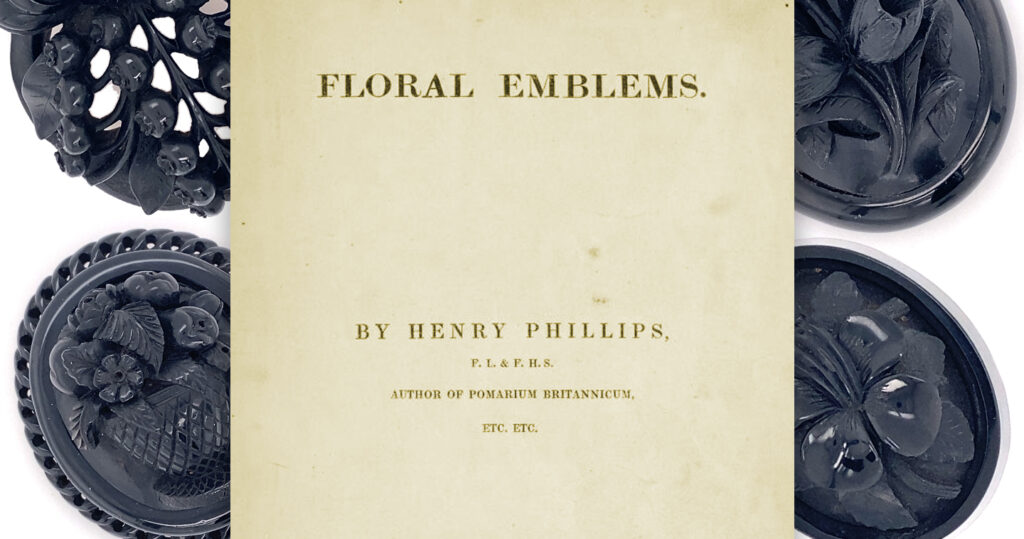
SEPTEMBER.
By the potent sun elated high,
The vineyard swells refulgent on the day.”
Thompson.
The etymology of the name of this month
is derived from its being the seventh from March.
September may be considered the festival
month of jolly Bacchus .
“ For clust’ring grapes are his peculiar care.”
Floral Emblems, p.47
DRUNKENNESS.
VINE.-Vitus.
Greatfather, Bacchus, to my song repair;
For clust’ring grapes are thy peculiar care :
Come strip with me,my god; come drench all o’er,
Thy limbs in musk of wine, and drink at ev’ry pore .”
This emblem requires no explanation, and our only remark on a drunkard will be the words of Shakespeare.
Floral Emblems, p.126
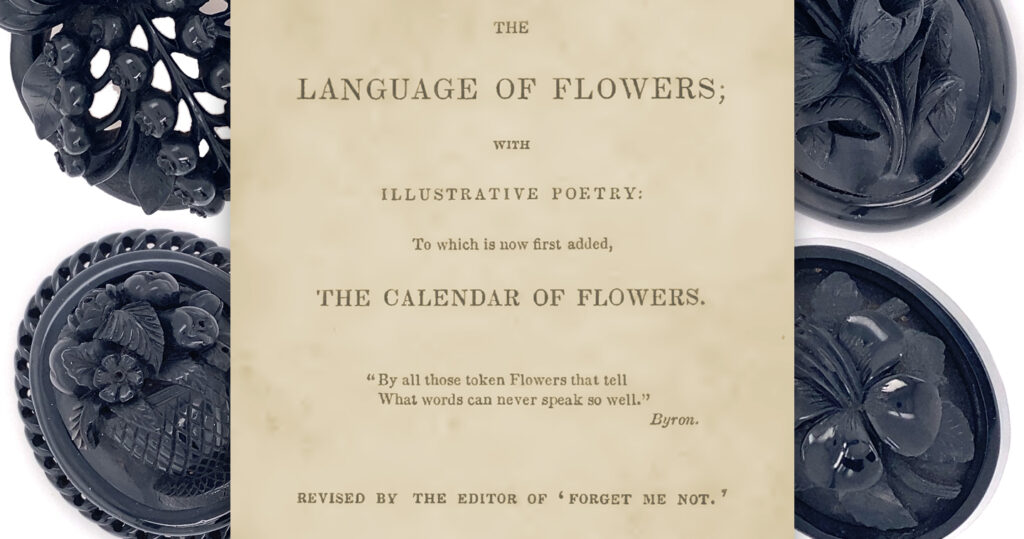
In our favoured country, Spring is clothed in a green robe enamelled with flowers, which owes all its ornaments to Nature. Summer crowned with blue-bottles and wild poppies, proud of her golden harvests, receives from the band of man part of her decorations; whilst Autumn appears laden with fruit brought to perfection by his industry. Here the juicy peach is tinged with the colours of the rose; the fine flavoured apricot borrows the gold that glows in the bosom of the ranunculus ; the grape decks itself with the purple of the violet; and the apple with the varied hues of the gaudy tulip. All these fruits are so like flowers, that one would suppose them to have been made only to delight the eye : but yet they come to increase the abundance of our stores, and Autumn, which pours them upon our tables, seems to proclaim that they are the last gifts which Nature means to lavish upon us.
Frederic Shoberl, The Language of Flowers, p. 186

Grape, Wild… Charity
The Illustrated Language of Flowers, p.26




